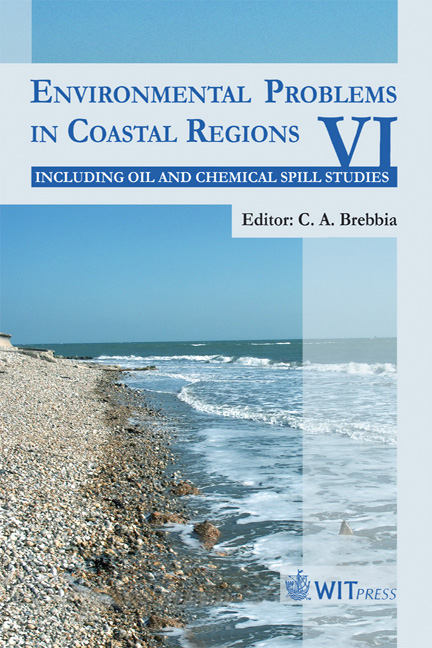The Effect And The Toxicity Of Iranian Oil Dispersant (Pars 1) On Rainbow Trout
Price
Free (open access)
Transaction
Volume
88
Pages
10
Published
2006
Size
534 kb
Paper DOI
10.2495/CENV060081
Copyright
WIT Press
Author(s)
L. Bordbar, S. Oryan, M. Emtiyazjoo & D. Farkhani
Abstract
Dispersants are oil spill response chemicals that are used to disperse floating oil in the water column. In this study the new oil dispersant Pars 1, which was produced by the Iranian Oil Company, was examined on 28-32 g rainbow trout. 96 hours acute toxicity of oil dispersant by itself and oil and dispersant combinations were tested in various concentrations. For each dose of experiment three treatments, one control and 30 fish were considered. The Lc50 by means of the Probit value and ANOVA test was determined. According to this method, the 96-hours Lc50 for Pars 1 and oil/dispersant are 47.7618 and 491.4277mg/lit. The effectiveness of Iranian oil dispersant (Pars 1) was compared with Gamlen OD4000 which is being used in south Iranian waters. By calculating the RET value and bioassay studies, the high effect and efficiency of Pars 1 has been proved. Keywords: oil dispersant, oil toxicity, Oncorhynchus mykiss. 1 Introduction Oil spill can have a serious economic impact on coastal activities and on those who exploit the resources of the sea. Simply, the effects of oil on marine life are caused by either the physiological nature of the oil or by its chemical components. The most toxic component in oil tend to be those lost rapidly through evaporation when oil is spilt, because of this, lethal concentrations of toxic components lead to large scale mortalities of marine life (ITOPF [6]).
Keywords
oil dispersant, oil toxicity, Oncorhynchus mykiss.





